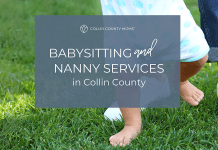“For children, play is serious learning. Play is really the work of childhood.” – Fred Rogers
We adults could learn a lot by watching children play. Many of us have forgotten the feel of sand streaming through our fingers, losing ourselves in art, colors, and imagination, and how it feels to play pretend while we howl with laughter or lose ourselves in a quiet thinking space.
Emotional expression is the main way young kids communicate their needs. Older kids stop engaging in fantasy play, but the need to be physical and cooperative with peers in imaginative ways remains important throughout all of childhood. The behaviors that babies, children and teens have are really just an attempt to express feeling.

While structured learning at school is important, time spent playing at home in an unstructured way is imperative. Play helps children work express their likes and dislikes, resolve conflict, and work through painful feelings. Children problem solve or think through big issues the way adults do, so the best way for children to express themselves, is through play.
As adults, we think play is just messing around. But “messing around” for a child is like solving the world’s problems. Where adults may have a conversation with friends about what they think, feel, and need, kids don’t do that. They play!

Play is simply emotional expression. It’s how they move what’s on the inside, to the outside. When kids work on a sand sculpture, play dress up, or climb a tree, their brain is engaged in some heavy emotional and physical lifting. They’re working things out.
There are four main types of play that are important for kids in order to grow and thrive:
- Expressive. Children can learn to express themselves through the art they create, the sculptures they build, the instruments they play, and any other creative tools they try. This is important because it helps children express their feelings through the materials with which they play.
- Constructive. Children get creative with constructive play. They explore patterns and objects in a way that helps them solve problems, and practice new idea and creative ways of thinking about issues.
- Physical. Watch any child on the playground, and you’ll see physical play in action! They need to jump, chase, and climb in order to have better coordination and to build strength. And, when they’re playing a game of tag, they know how to cooperate with other children and be a part of a team. This type of play helps a child physically work out what is eating at them emotionally.
- Fantasy. When children reenact situations, they’re working out how to handle various situations. They may pretend to be adults, or animals, or even another child. They may even have imaginative friends that they can talk with while working through some pretty challenging emotions. During fantasy, children will try out new words, different ways of speaking, and behaviors.
It’s important to recognize, and allow, each type of play. Sure, we want children to be careful on the playground! But, what we really want is children to grow, thrive and develop, and the only way they can do that is through play.

Emily Bush, MS, LPC-Intern
Supervised by David Huffman, PhD, LPC-S, RPT
Emily Bush is the Lower School Counselor at Trinity Christian Academy. She has a bachelor’s degree from Wake Forest University and a Masters in Counseling from The University of North Texas. She has worked in a variety of settings, including schools, mental health clinics, hospitals and private practice.













